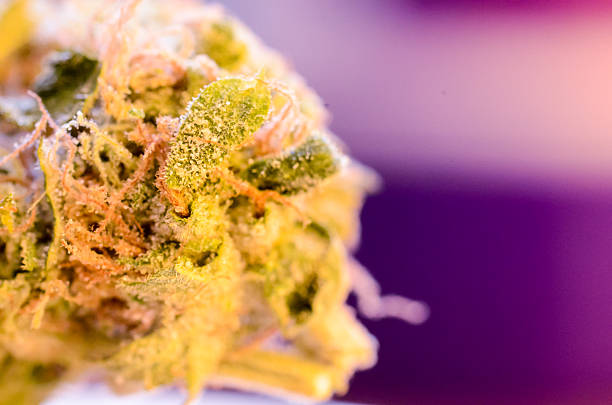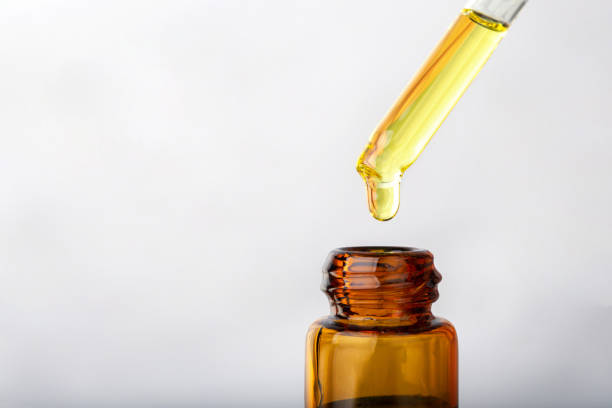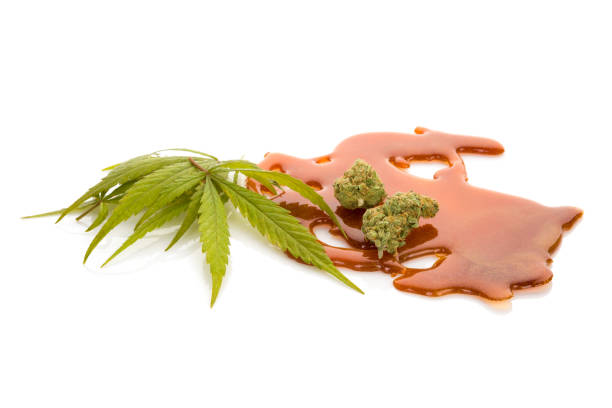Dabbing Or Vaporizing: Weighing The Pros And Cons Of Consuming Weed Concentrates
As cannabis legalization continues to spread throughout the United States and abroad, more people are turning to weed concentrates as a way of consuming marijuana. Dabbing and vaporizing have become popular methods for consuming these concentrates, but they differ in terms of their effects, equipment, and overall experience. Whether you're a seasoned smoker or a newcomer to the world of cannabis, it's important to understand the pros and cons of each method before deciding which one is right for you.
In this article, we will delve into the basics of dabbing and vaporizing, including how they work, what equipment is required, and what kind of effects you can expect. We will also explore the benefits and drawbacks of each method so that readers can make an informed decision about which one is best suited to their needs. By weighing the pros and cons of dabbing versus vaporizing weed concentrates, readers will be better equipped to choose the consumption method that aligns with their preferences and lifestyle.
Understanding the Basics of Dabbing
The process of heating cannabis extracts to create a potent vapor that can be inhaled is an increasingly popular method among those seeking a more intense and fast-acting high. This practice, known as dabbing, involves the use of specialized equipment and concentrates such as shatter, wax or oil. The process typically entails using a device called a dab rig that has a heated nail onto which the concentrate is placed. Once the concentrate is heated, it creates a vapor that can be inhaled through a mouthpiece attached to the rig.
Dabbing has become popular because it offers several advantages over other methods of consuming cannabis. One of its benefits is that it allows for faster onset times since the concentrate produces an almost immediate effect upon inhalation. Additionally, since concentrates are much stronger than traditional cannabis flower, users need less product to achieve desired effects. Finally, dabbing also provides greater control over dosing since users can carefully measure out specific amounts of concentrate to achieve their desired level of high.
The Benefits and Drawbacks of Dabbing
An examination of the advantages and disadvantages associated with using concentrated forms of cannabis reveals a complex set of factors that require careful consideration. On one hand, dabbing offers a fast-acting and potent method of consuming cannabis concentrates. It allows users to experience the full flavor profile and effects of the concentrate, which may be stronger than traditional methods such as smoking or edibles. Additionally, dabbing can be more efficient in terms of consumption since it requires smaller amounts of concentrate compared to other methods.
However, there are also drawbacks to dabbing that must be taken into account. One concern is the potential for overconsumption or misuse due to its high potency. Inexperienced users may find themselves overwhelmed by the effects and may not know how to properly dose their concentrates. There is also a risk for inexperienced users to accidentally burn themselves during the process, which could result in serious injury. Furthermore, not all states have legalized concentrates, meaning that individuals who use them illegally may face legal repercussions if caught by law enforcement agencies.

Understanding the Basics of Vaporizing
Efficient and effective consumption of cannabis can be achieved through the process of vaporization, which involves heating the plant material to a temperature that releases its active compounds without burning it. Vaporizing is considered by many as a healthier alternative to smoking because it eliminates the harmful toxins produced by combustion. It also allows users to experience the full range of effects from cannabis without inhaling smoke, which can irritate the lungs.
Vaporizers come in different forms, such as desktop units and portable devices. Desktop vaporizers are often larger and more powerful than their portable counterparts, but they provide more control over temperature settings and produce higher quality vapor. Portable vaporizers are more convenient for on-the-go use but may have limited battery life and heating options. Overall, vaporizing offers a discreet way to consume cannabis without producing noticeable odors or smoke clouds, making it an attractive option for those who want to maintain privacy or avoid detection.
The Benefits and Drawbacks of Vaporizing
Exploring the advantages and disadvantages of vaporizing cannabis can provide valuable insights into its potential as a consumption method, offering users a clearer understanding of this technique's benefits and limitations. One of the main benefits of vaporizing is that it produces fewer harmful toxins than smoking. When heating cannabis at lower temperatures, it releases active compounds such as THC without burning the plant material. This creates a cleaner and smoother hit compared to smoking, reducing respiratory issues associated with inhaling smoke.
Another benefit is that vaporizing allows for better control over dosage and potency. Users can adjust the temperature to their desired level, which affects how quickly cannabinoids are released from the plant material. This means that users can experience different effects depending on their preferences or medical needs. However, there are also drawbacks to vaporizing cannabis concentrates. For one, it requires specialized equipment that may be costly for some people. Vaporizers come in different forms such as desktops or portable devices, requiring varying levels of maintenance and cleaning that could be time-consuming or cumbersome for some individuals.

Choosing Between Dabbing and Vaporizing
When it comes to choosing between dabbing and vaporizing, several factors need to be taken into account. Personal preference is one of the key aspects that can influence this decision. While some users might prefer the intense and immediate effects of dabbing, others might find vaporizing more suitable for their needs due to its subtler and longer-lasting effects. Additionally, cost considerations such as the price of equipment and accessories should also be factored in when deciding which method to use.
Personal Preference
The evaluation of personal preference in the consumption of cannabis derivatives has a significant impact on an individual's overall satisfaction with their experience. Some people may prefer dabbing due to its intense and immediate effects, while others may opt for vaporizing because it is a milder and smoother experience. Personal preference can also be influenced by the equipment used for consuming concentrates, such as the type of rig or vaporizer.
Factors such as taste, potency, and convenience can also play a role in personal preference. Some individuals may enjoy the flavors of certain strains when dabbed while others may prefer the subtler tastes produced through vaporization. It is important to understand that everyone's preferences are unique and there is no right or wrong way to consume cannabis derivatives as long as it is done safely and responsibly. Ultimately, experimenting with different methods of consumption will allow individuals to find what works best for them based on their needs and preferences.
Desired Effects
Understanding the desired effects of cannabis derivatives is crucial in determining the most effective method of consumption, as different methods can produce varying levels of psychoactive and therapeutic effects. When it comes to consuming weed concentrates, such as dabbing or vaporizing, individuals should consider their desired level of potency and onset time. Dabbing typically produces a faster onset time and stronger high due to its high concentration of THC. On the other hand, vaporizing may offer a more controlled and milder experience due to its lower concentrations.
Individuals seeking immediate relief from symptoms such as chronic pain or anxiety may prefer dabbing for its fast-acting effects. However, those who seek a more mild and prolonged therapeutic experience may opt for vaporizing instead. Additionally, it is important to note that different strains and types of concentrate can also affect the overall experience, further emphasizing the importance of understanding desired effects before choosing a method of consumption. Ultimately, weighing the pros and cons of each method based on individual preferences can lead to an optimal cannabis consumption experience.
Cost of Equipment and Accessories
The financial considerations associated with the consumption of cannabis derivatives can have a significant impact on an individual's decision-making process, as the cost of equipment and accessories required for various methods of consumption may vary greatly. When it comes to dabbing or vaporizing weed concentrates, both methods require specialized equipment that can be expensive. Dabbing requires a rig, nail, and torch while vaporizing requires a vaporizer or vape pen. The cost of rigs can range from $50 to over $500 depending on the quality and brand, while vaporizers can range from $60 to over $400 depending on the type and features.
In addition to the initial investment in equipment, ongoing costs such as replacement parts and maintenance should also be considered. Dabbing requires regular replacement of nails which can add up over time, while vaporizers may require new coils or cartridges periodically. While both methods may seem costly upfront, some argue that they are more efficient in their use of cannabis compared to smoking traditional flower buds. Ultimately, individuals must weigh their desired effects against the costs associated with each method before making an informed decision about how to consume their cannabis concentrates.
Conclusion
In conclusion, the use of cannabis concentrates has become increasingly popular in recent years, with dabbing and vaporizing being two common methods of consumption. Both techniques have their benefits and drawbacks. Dabbing provides a quick and potent high, but it can also be dangerous due to the risk of explosions during production. Vaporizing is a safer alternative that offers a more controlled and discreet experience. However, it may not provide the same intense effects as dabbing.
Ultimately, choosing between dabbing or vaporizing should be based on personal preferences and priorities. It's important to weigh the pros and cons carefully before making a decision. Regardless of which method is chosen, it's crucial to use concentrates responsibly and in moderation to avoid unwanted side effects or potential harm. As legalization efforts continue across the globe, more research will undoubtedly shed light on these various methods of consuming cannabis concentrates for both therapeutic and recreational purposes.
If you're interested to have more knowledge about this topic, feel free read this blog post from Local Product of Colorado.

